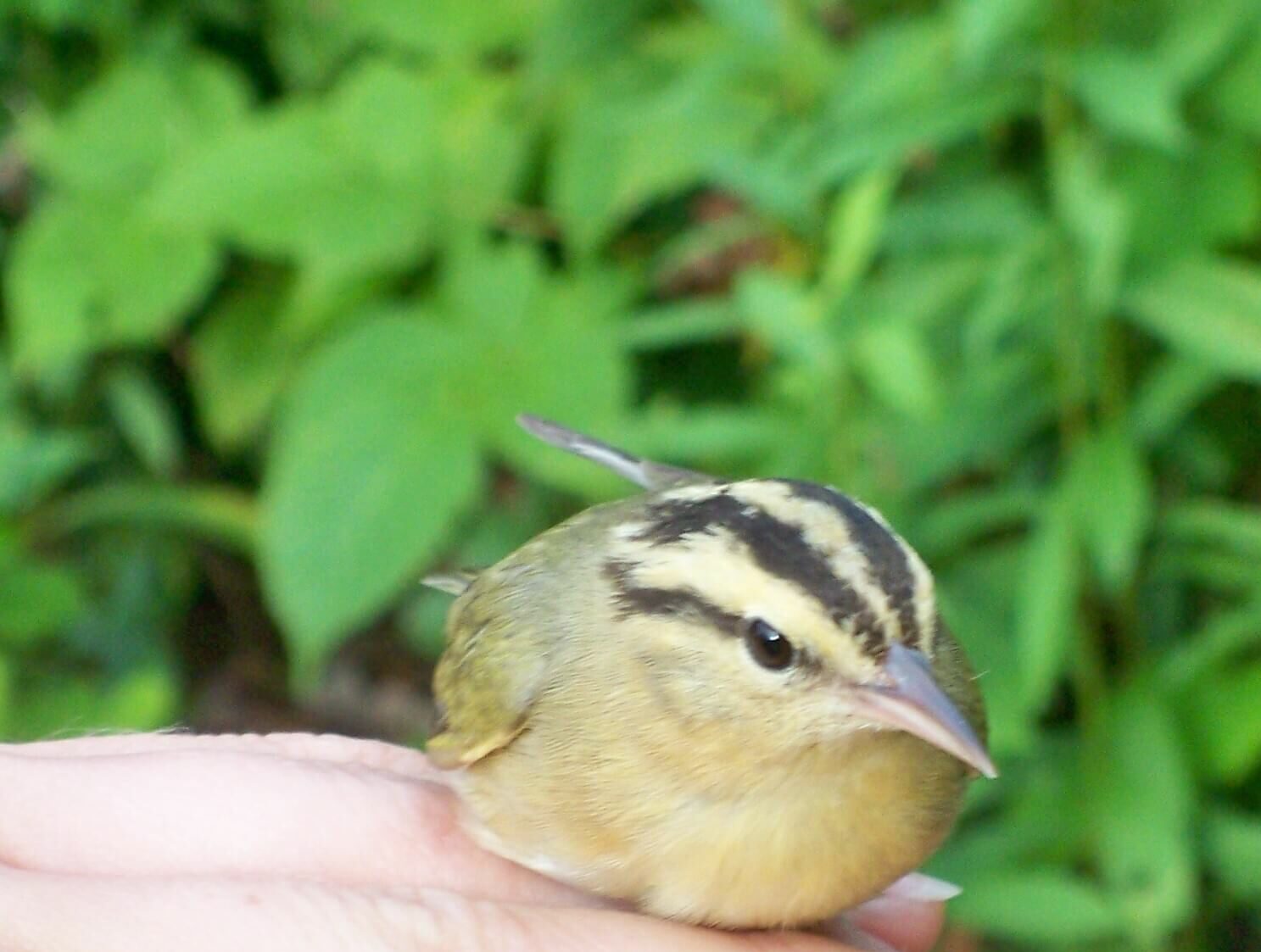




There are 150 different species of songbirds in New Jersey, and majority of them are Neotropical migrants – those that breed in temperate areas of the US and Canada and migrate long distances to winter in tropical areas of Mexico and Central and South America, or in some cases further south. Birds such as the upland sandpiper (technically a shorebird), golden-winged warbler, northern parula, wood thrush, scarlet tanager, cerulean warbler, and bobolink are Neotropical migrants. Short-distance migrants, those species that breed in the US or Canada but only travel a few hundred miles or less for the winter, include robins, most sparrows, eastern towhees, and bluebirds.





Of the 150 different species of songbirds in New Jersey, six are endangered, five threatened, 25 special concern, and an additional 35 are Species of Greatest Conservation Need (pdf, 335kb). Many more birds are declining, however, as evidenced from the 3 Billion Bird Decline – some species have lost 60-80% of their population since 1970. These declining bird species are comprised of a mix of Neotropical and short-distance migrants, along with a few residents. The majority of the declining bird species, including many of New Jersey’s endangered, threatened, and special concern songbirds (below), utilizes forests, and/or grasslands for breeding or post-breeding.


Because these declines are linked to habitat loss on the breeding grounds, NJ Fish and Wildlife focuses habitat restoration efforts on forest and grassland habitat types.
Forests

Forest songbird habitat projects are being implemented on public and private lands in northern New Jersey. Out of the 59 forest bird species that breed in New Jersey, 31 of them are declining, and 30 of those declining species either breed in open-canopy forests filled with shrubs, saplings, and herbaceous vegetation, or bring their chicks to open-canopy forests filled with shrubs and saplings after leaving the nest. Songbirds suffering the greatest declines like the eastern whip-poor-will, golden-winged warbler, cerulean warbler and field sparrow have all been observed in areas where the closed-canopy forest was extensively thinned via silviculture to make an open-canopy forest. Even birds associated with closed-canopy forests, such as the pileated woodpecker and the endangered red-shouldered hawk, are seen using these areas for breeding or foraging.


Grasslands

Grassland songbird habitat projects are also being implemented on public and private lands. Mainly through the conversion of agricultural land and cool-season grasses to a fallow or warm-season grass mix, these projects readily attract declining songbirds like bobolinks, grasshopper sparrows, and eastern meadowlarks.

Endangered, Threatened, and Special Concern Songbirds
Endangered
Special Concern
Black-billed Cuckoo
Blackburnian Warbler
Black-throated Blue Warbler
Black-throated Green Warbler
Blue-headed Vireo
Brown Thrasher
Canada Warbler
Cerulean Warbler
Cliff Swallow
Common Nighthawk
Eastern Meadowlark
Gray-cheeked Thrush
Special Concern (cont.)
Hooded Warbler
Ipswich Sparrow
Kentucky Warbler
Least Flycatcher
Nashville Warbler
Northern Parula
Saltmarsh Sparrow
Veery
Whip-poor-will
Winter Wren
Wood Thrush
Worm-eating Warbler
Yellow-breasted Chat
Volunteer Opportunities!
Experienced birders (both sight and sound) are needed to volunteer to fill vacancies in the North American Breeding Bird Survey (BBS). The BBS is a long-term, international avian monitoring program to track the status and trends of North American bird populations at the national, regional, and state scales. New Jersey has 27 survey routes in total and vacant routes can be checked online. A summary about the BBS is below:
- Each survey route is 24.5 miles long with stops at 0.5-mile intervals.
- Surveys are conducted on a single day, usually during the first half of June.
- At each stop, a 3-minute point count of all birds seen and heard is conducted.
- The data are most useful when the same observer runs the route for several years, so we encourage people to make a commitment to run their routes for at least the three consecutive years, preferably longer.
- Volunteers must have suitable transportation to complete a survey, good hearing and eyesight, and the ability to identify all breeding birds in the area by sight and sound.
New Jersey Fish and Wildlife’s Endangered and Nongame Species Program provides coordination for the BBS in New Jersey. For more information, contact Sharon Petzinger.
Other Ways You Can Help
- Enhance your Backyard Habitat
- Reduce Bird Collisions: Buildings and Glass
- Learn how to bird – start with the Birding Basics
- Keep your cats indoors
 Official Site of The State of New Jersey
Official Site of The State of New Jersey
